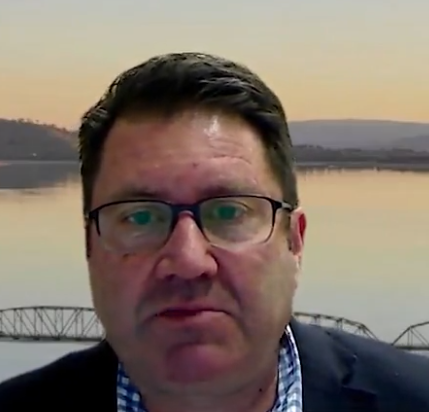
Dr Craig Underhill
Despite a doubling in numbers over the last decade the medical oncology workforce is still inadequate to meet increasing patient needs and cannot to operate to acceptable safety and quality benchmarks, a new study shows.
Dr Craig Underhill a Medical Oncologist in Albury, NSW, presented the findings of a new workforce survey at MOGA 2021, showing that the number of Full Time Equivalent (FTE) oncologists has not kept pace with the demands of an ageing population and increasingly lengthy and complex cancer treatments.
Figures obtained from 18 major cancer centres in Victoria showed that the average number of new patients per FTE medical oncologist in 2019 was 242, a significant increase over the figure of around 169 reported in a similar survey conducted in 2009.
The shortfall was even greater in outer metropolitan and regional cancer centres, which reported figures of 330 and 280 new patients per medical oncologist, respectively.
Dr Underhill noted that the latest figures were far in excess of benchmark levels of 160-175 new patients per medical oncologist reported in Canada and Western Europe.
“The average workload … is much higher than accepted standards and is probably higher than is practical to deliver safe and efficient services,” he said.
The total number of FTE medical oncologists in Victoria had increased from 68 to 130 since the Australian Medical Oncologist Workforce Study was carried out in 2009, he noted, but at the same time the number of patients seeing an oncologist had increased from 11,500 to 31,750 in 2019.
While there had been a historic shift to expand regional cancer services, the survey findings highlighted the ongoing need to target resources to address a medical oncologist workforce shortage, said Dr Underhill
It was also notable that many of the high volume cancer services still lacked basic functions such as e-prescribing and electronic medical records, he added.
“It appears the current levels of the oncology workforce are inadequate to meet patient needs. The growing incidence of cancer and ageing population will likely require expansion of services and training of workforce,” he told the meeting.
Dr Underhill suggested that new benchmarks would be needed to reflect contemporary models of cancer care.
“When the last MOGA workforce survey was done [in 2009] a lot of patients with metastatic disease had an average of four cycles of chemotherapy. And as we all know now, patients are on treatment for much longer,” he said.
And the shortfall would be further exacerbated by a post-pandemic surge in treatment demand for patients whose cancers went undiagnosed and untreated, which may impact KPIs such as time to treatment, he warned.